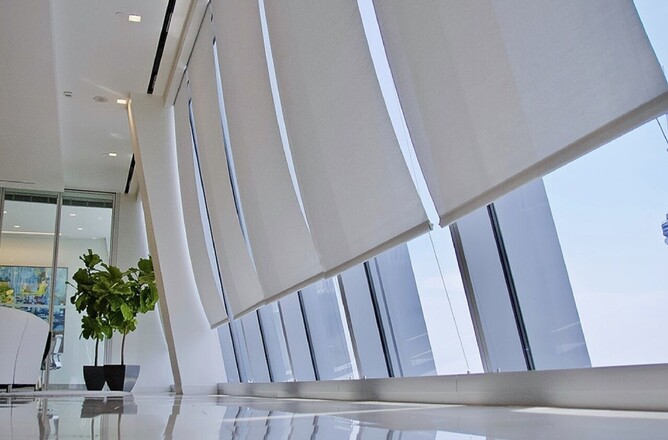Modern architecture relies on windows now more than ever before. According to Energy.gov, about 30% of a building's heating energy is lost through the windows, and in cooling seasons, about 76% of sunlight that falls on standard double-pane windows enters to become heat. With the drastic rise in glass facades being incorporated into architectural trends in today's built environment, the demand for a simplified, autonomous and digitized solution to daylighting becomes critical.
What was once a simple manually operated solution to traditional office spaces, patient rooms and commercial building spaces with small individual window panes, have now been replaced with expansive floor to ceiling glass building wide. So with all that glass, how do interior designers, facilities engineers and architects solve their building's mass solar control challenges while ensuring optimum daylighting, calming window views, and continuous patient and occupant comfort?
That's where a motorized shading system comes in.
Motorized shading solves the unique solar control challenges with the push of a button. Have a façade that faces extreme heat, and yet one that gets very little daylight? Does one area of a floor experience uncomfortable glare, while another is dim? Have very high and hard to reach windows? With automated and motorized systems you can adjust shades based on multiple, customizable factors including: external conditions, adding climate sensors and timers as stand-alone products or integrating them into entire building or office automation systems. Motorized products reduce the need for individual manual controls and minimizes user error. Not to mention they're quiet, discreet, and responsive, as well as ADA compliant by providing wall switch or remote control they offer the easiest, safest control options for occupants with disabilities. In addition, with automated solutions, motorized treatments can smartly manage temperatures by opening or closing when interior or exterior temps reach certain pre-set points, they moderate heat gain/loss, and optimize natural light while reducing glare, all while keeping occupants comfortable.

